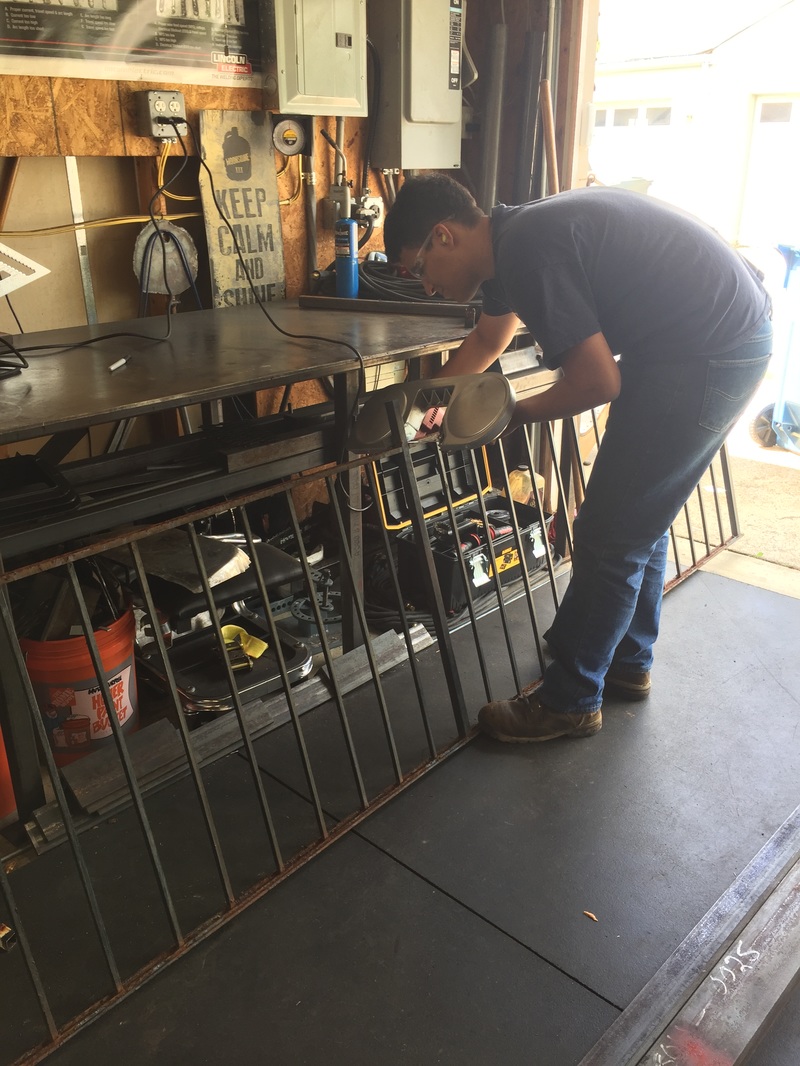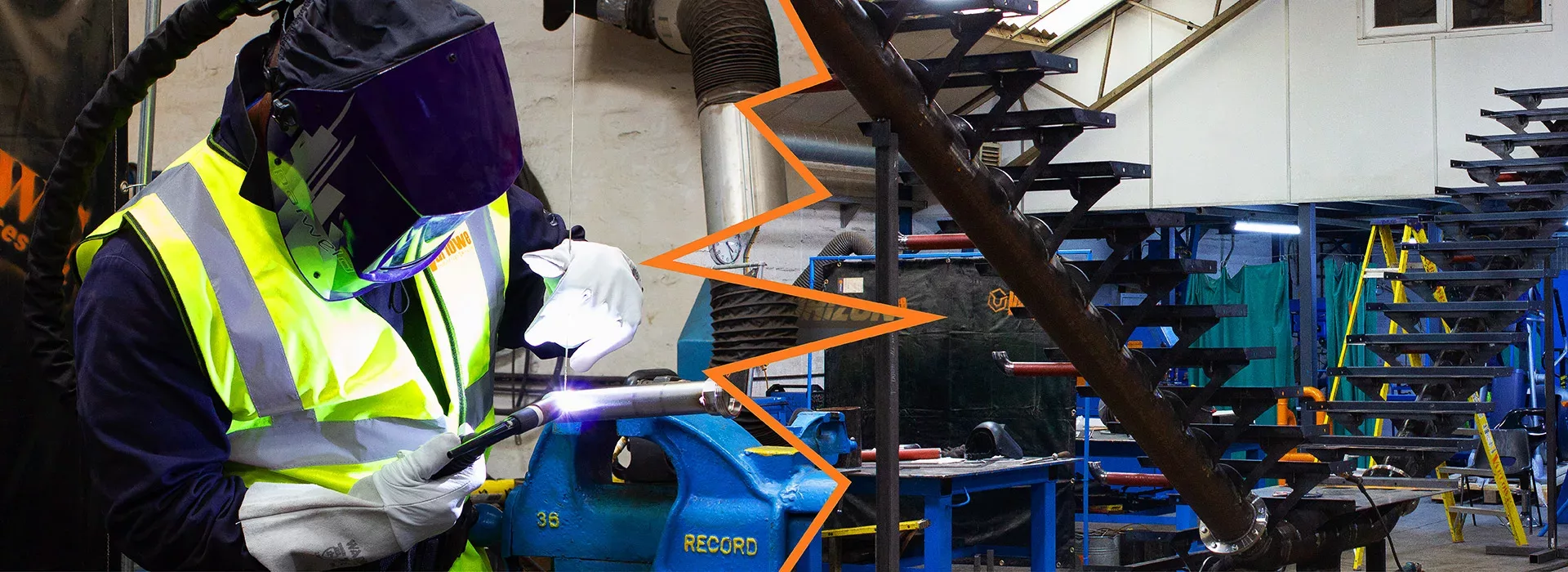All About Welding: Key Insights Into Techniques and Best Practices for Success
Welding encompasses a variety of methods, each fit for particular products and applications. Recognizing these techniques, such as GMAW, SMAW, and TIG, is important for accomplishing optimal outcomes. Furthermore, the appropriate devices and safety and security practices can not be neglected. As preparation and fixing play critical duties in the welding process, mastering these aspects can greatly enhance the high quality of the end product. What are the vital factors that guarantee a successful weld?
Comprehending Different Welding Techniques
Welding methods encompass a range of methods, each matched to certain applications and products. Among one of the most common techniques are Gas Steel Arc Welding (GMAW), Shielded Metal Arc Welding (SMAW), and Tungsten Inert Gas Welding (TIG) GMAW, additionally referred to as MIG welding, is preferred for its rate and convenience, making it excellent for thin products. SMAW, or stick welding, is favored for its simpleness and efficiency in outside settings, particularly with thicker metals. TIG welding offers accuracy and control, making it suitable for complex work and non-ferrous steels (Montana Mobile Welding and Repair Belgrade Fabrication). Each technique has its unique advantages and factors to consider, enabling welders to pick the most effective approach based on the project's needs, material kind, and desired end results. Comprehending these techniques is essential for successful welding
Essential Welding Equipment and Tools
While different welding methods need details abilities, the ideal tools and devices are similarly essential for accomplishing quality results. Vital welding equipment includes welding makers, which vary depending upon the method-- such as MIG, TIG, or stick welding. Protective gear, including aprons, gloves, and safety helmets, guarantees security and comfort during the procedure. Additionally, fixtures and clamps help protect materials in position, ensuring accuracy in welds. Consumables like welding rods, wire, and securing gas are likewise critical components that affect the quality of the weld. Devices such as mills and cutters assist in surface prep work and post-weld completing, contributing to a professional end result. Purchasing high-quality equipment eventually enhances the effectiveness and effectiveness of welding tasks.
Safety And Security Practices in Welding
Appropriate safety and security techniques are necessary in the welding sector to secure workers from prospective threats. Welders must use suitable personal safety tools (PPE), including helmets with correct shading, handwear covers, and flame-resistant garments. Sufficient ventilation is important to minimize exposure to damaging fumes and gases created throughout the welding process. Furthermore, workers must be trained in the correct handling of welding devices to avoid crashes. Fire precaution, such as keeping combustible materials away from the welding area and having fire extinguishers easily offered, are needed. Regular inspections of devices and work spaces can help identify prospective threats prior to they result in accidents. By adhering to these security methods, welders can produce a more secure working environment and decrease dangers connected with their profession.
Preparing Materials for Welding
Preparing materials for welding is a vital action that significantly affects the high quality and honesty of the end product (Belgrade Fabrication). Appropriate prep work entails cleaning the surfaces to remove impurities such as oil, rust, and dirt, which can compromise the weld. Strategies such as grinding, sanding, or using solvents are generally employed to accomplish a clean surface. Additionally, making sure that the materials mesh snugly is essential; voids can lead to weak welds. It's also essential to consider the alignment and positioning of the components, as this will influence the convenience of welding and the final outcome. Finally, selecting the appropriate filler material and ensuring compatibility with the base steels is crucial for accomplishing strong, sturdy welds
Tips for Achieving High-Quality Welds
Attaining premium welds requires interest to information and adherence to ideal practices throughout the welding process. Correct joint preparation is important, ensuring surfaces are clean and complimentary from pollutants. Choosing the appropriate filler product and welding technique based on the base metals is crucial for suitable bonding. Preserving consistent traveling speed and angle while welding can stop problems and promote harmony. In addition, controlling warmth input is essential; extreme warmth can result in warping and weakened joints. Routinely inspecting the welds during the procedure enables immediate changes if required. Utilizing suitable post-weld treatments, such as cleansing and tension relief, can boost the durability and integrity of the weld, ultimately ensuring a successful end result.
Fixing Typical Welding Issues
Welding usually provides challenges that can affect the quality and stability of the final product. Typical issues such as porosity, inconsistent weld grains, and getting too hot can arise, each needing particular troubleshooting techniques. Recognizing these troubles is vital for welders to boost their abilities and achieve ideal outcomes.
Porosity Issues Clarified
Porosity can frequently be neglected, it continues to be an essential problem in welding that can compromise the honesty of a finished product. Porosity describes the presence of small gas pockets within the weld grain, visit our website which can compromise the joint and lead to premature failure. This problem generally emerges from pollutants, dampness, or incorrect protecting gas protection during the welding procedure. To mitigate porosity, welders should confirm that the base materials are dry and tidy, make use of ideal securing gases, and keep constant welding criteria. Routinely evaluating the tools and environment can also assist identify potential problems prior to they materialize in the weld. Resolving porosity successfully is necessary for achieving strong, sturdy welds that fulfill quality requirements.

Inconsistent Weld Beads
Inconsistent weld grains can significantly influence the high quality and stamina of a finished item. Various factors add to this problem, consisting of incorrect traveling speed, incorrect amperage setups, and inconsistent electrode angles. When the welder relocates too rapidly, a bead may show up slim and do not have infiltration, while relocating too gradually can cause extreme buildup. In addition, making use of the wrong amperage can cause either damaging or excessive spatter, both of which compromise weld integrity. The welder's method, such as inconsistent torch activity, can additionally lead to uneven grain look. To mitigate these problems, welders need to concentrate on maintaining constant, controlled activities and making sure appropriate equipment settings to attain uniformity in their welds. Uniformity is crucial to attaining trusted and strong welds.
Getting Too Hot and Bending Issues
Extreme heat during the welding procedure can cause significant getting too hot and buckling problems, impacting the structural integrity of the workpiece. These troubles frequently manifest as distortion, which can jeopardize positioning and fit-up, making further assembly testing. Aspects adding to overheating include the selection of welding parameters, such as voltage and travel rate, along with the kind of product being welded. To mitigate these issues, welders should maintain regular traveling speed and appropriate warmth input while keeping an eye on the work surface temperature level. In addition, pre-heating or post-weld warmth therapy can help relieve stress and anxieties created by rapid air conditioning - Belgrade Welding. Normal assessment and adherence to finest practices are important in preventing overheating and making certain the long life and dependability of welded frameworks
Often Asked Inquiries
What Are the Occupation Opportunities in the Welding Market?
The welding sector provides varied occupation opportunities, consisting of placements as welders, inspectors, designers, Discover More Here and teachers. Specialists can operate in production, building, aerospace, and automobile industries, profiting from strong demand and affordable salaries in various duties.
Just How Can I Boost My Welding Rate Without Compromising High Quality?
To enhance welding rate without giving up top quality, one need to practice reliable methods, keep devices, maximize setups, and improve hand-eye sychronisation. Normal training and seeking feedback can likewise substantially add to attaining faster, top notch welds.
What Qualifications Are Offered for Welders?
Various accreditations exist for welders, including those from the American Welding Society (AWS), the National Facility for Building Education And Learning and Research (NCCER), and different industry-specific organizations. These credentials boost employability and demonstrate skill efficiency.
How Does Welding Impact the Qualities of Metals?
Welding influences the homes of metals best 220v mig welder by altering their microstructure, which can lead to modifications in stamina, ductility, and firmness. Warmth input and air conditioning rates throughout the process greatly affect these material features.
Can I Weld Dissimilar Metals With Each Other?
